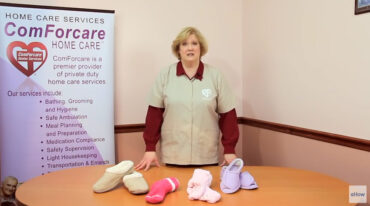(BPT) – Allergy season is behind us and before flu season strikes, now is the time for consumers to clean out their medicine cabinet and brush up on medication consumption and storage tips. A recent data brief from the Centers for Disease Control and Prevention (CDC) reveals that almost 50 percent of Americans take at least one prescription drug per month.
“Many of us keep multiple medications, both prescription and over-the-counter, in the house,” says JeQuithia Sims, pharmacy technician program chair at Everest College in Arlington, Texas. “But when stored or consumed incorrectly, medication can cause unexpected consequences.”
Everest campuses across the country offer a pharmacy technician program that prepares students, through technical and practical training, for careers in aiding licensed pharmacists. Here Sims shares 10 pharmaceutical best practices to keep in mind when organizing the medicine cabinet.
Storing your medication
* Store in a cool, dry place – While it varies by manufacturer, this rule stands true for most medications. A few simple storage locations might be in a medicine cabinet, on top of a dresser or on a designated shelf. If you have children, be sure to keep medications up high and out of reach.
* Keep away from light – Light can degrade medication more quickly than intended, so it’s important you don’t store medication in light-filled places such as a windowsill or under powerful indoor lighting.
* Honor the expiration date – Whether it’s an over-the-counter or prescription medication, old pills degrade over time and can cause a bacteria imbalance when consumed. Most medication expires after one year, so use this as a rule of thumb when revisiting old pills. Before picking up that 500-count bottle of pain reliever because it’s a “better deal,” ask yourself if your household will consume all 500 pills that year. If not, it might be safer to grab the smaller bottle, and re-stock yearly.
* Do not flush – When disposing of expired, discolored, or unused prescription medications, be mindful of proper disposal practices by throwing medications away in the household trash or through your community’s medication disposal program. One of the easiest options is to take your unused or expired medications to your pharmacy and they will dispose of them properly. Flushing or pouring medication down the drain harms the environment, as sewage systems are not capable of removing medicines from the water released into lakes, rivers and oceans.
Using your medication
* Note the warning label – Even if you’ve taken the medication for years, it’s always a good idea to look at the warning label for consumption directions, as your doctor may have altered your dosage or the manufacturer slightly changed the consumption directions.
* Consuming liquids is not the same as consuming water – If the label instructs you to consume with water, be careful not to consume with other beverages. Juices and acidic drinks can cause the medication to break down faster than normal and hot drinks, such as coffee or tea, cause coated pills to melt too quickly in the stomach – not the intestine, where it’s intended to break down. This may produce side effects as harmful as stomach ulcers.
* Don’t lose the dropper – It might seem the same to use a household spoon with liquid medication, but the dropper or spoon provided by the pharmacy has been measured specifically for your intended dosage. Research shows that silverware teaspoons can vary between one to nine milliliters dependent upon design, making them an unreliable tool for medication.
* Your pharmacist is your friend – Don’t forget that your pharmacist is an expert. When in doubt about the safety of consuming a medication for any given reason, your pharmacist is there to answer your questions.
Tips for kids
* Children are not small adults – If a medication is intended for adult consumption only, keep in mind that it cannot simply be given to children in smaller doses. Instead, seek a medication specifically designed for children.
* Medicine is not candy – Although referring to medicine as “candy” around children might be a tempting tactic to entice them to take it, parents should be wary of what might happen when they are not around. Children can easily get ahold of medication, consume large amounts and overdose.
Source unknown






